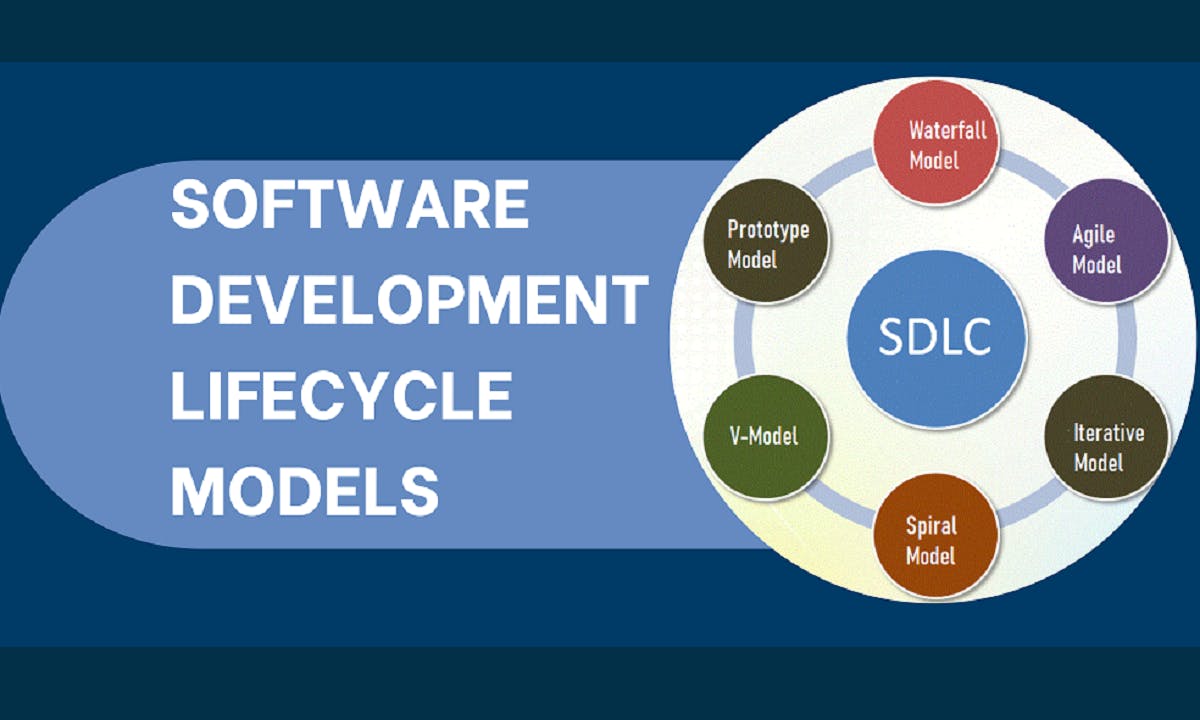Software development is a complex and demanding process that requires careful planning, execution, and management to ensure the final product meets the needs of the end-users. One of the key elements of successful software development is choosing the right software development lifecycle (SDLC) model. An SDLC model is a framework that outlines the stages involved in the development of software, from its conception to its delivery to end-users.
There are several different types of SDLC models, each with its unique approach, advantages, and disadvantages. In this article, we will explore the different types of SDLC models in detail.
6 Types of Software Development Lifecycle Models
Waterfall Model
The waterfall model is the oldest and most widely used SDLC model. In this model, each phase of the custom software development process is completed sequentially, and the output of each phase serves as input for the next phase. The phases in the waterfall model are:
Requirements Gathering
Design
Implementation
Testing
Deployment
Maintenance
One of the advantages of the waterfall model is that it is easy to understand and manage, making it a good choice for small projects. However, it is less flexible than other models, and any changes made to the requirements during the development process can result in significant delays and increased costs.
Agile Model
The Agile model is a popular SDLC model that emphasizes flexibility and collaboration. In this model, software development is broken down into small, iterative cycles, known as sprints, that typically last between one and four weeks. The Agile model emphasizes working software over documentation and encourages developers to work closely with end-users and stakeholders throughout the development process.
The phases in the Agile model are:
Planning
Requirements Analysis
Design
Development
Testing
Deployment
Maintenance
One of the advantages of the Agile model is that it allows for changes to be made quickly and easily, making it a good choice for complex projects. However, it can be difficult to manage, and the lack of formal documentation can make it harder to maintain the code over time.
Iterative Model
The Iterative model is similar to the Agile model in that it involves iterative cycles of development, but it places a greater emphasis on formal documentation and planning. In this model, each iteration involves the completion of all the phases of the software development process, from requirements gathering to deployment and maintenance. The phases in the Iterative model are:
Requirements Gathering
Design
Implementation
Testing
Deployment
Maintenance
One of the advantages of the Iterative model is that it allows for feedback from end-users and stakeholders to be incorporated throughout the development process, reducing the risk of the final product not meeting their needs. However, the emphasis on formal documentation and planning can result in slower development times and increased costs.
Spiral Model
The Spiral model is a highly flexible and adaptable SDLC model that is well-suited to large, complex projects. In this model, the development process is broken down into smaller cycles, with each cycle consisting of four phases: planning, risk analysis, engineering, and evaluation. Each cycle builds on the previous one, with the risk analysis phase helping to identify and mitigate potential risks and issues. The phases in the Spiral model are:
Planning
Risk Analysis
Engineering
Evaluation
One of the advantages of the Spiral model is that it allows for a high degree of flexibility, with changes and updates to the requirements able to be incorporated at any stage of the development process. However, it can be complex to manage, and the high degree of flexibility can lead to increased costs.
V-Model
The V-Model is a variation of the Waterfall model that places a greater emphasis on testing and verification. In this model, each phase of the development process is accompanied by a corresponding testing phase, with the testing phase being completed before moving on to the next phase of development. This ensures that each phase is thoroughly tested and verified before the development process continues.
The phases in the V-Model are:
Requirements Gathering
Requirements Analysis
Design
Implementation
Testing
One of the advantages of the V-Model is that it places a strong emphasis on testing, ensuring that the final product is thoroughly tested and verified before it is delivered to end users. However, it can be inflexible, and any changes made to the requirements during the development process can result in significant delays and increased costs.
Prototype Model
The Prototype model is a highly iterative SDLC model that is well-suited to projects with a high degree of uncertainty or where the requirements are not fully understood. In this model, a prototype of the final product is developed early in the development process, which is used to gather feedback from end-users and stakeholders. The phases in the Prototype model are:
Requirements Gathering
Prototype Design
Prototype Development
Prototype Testing
Requirements Refinement
Final Design
Implementation
Testing
Deployment
Maintenance
One of the advantages of the Prototype model is that it allows for feedback from end-users and stakeholders to be incorporated early in the development process, reducing the risk of the final product not meeting their needs. However, it can be expensive and time-consuming to develop multiple prototypes, and the lack of formal documentation can make it harder to maintain the code over time.
Conclusion
Choosing the right SDLC model is crucial to the success of any Custom software development project. The Waterfall, Agile, Iterative, Spiral, V-Model, and Prototype models are all popular and effective models, each with its unique approach, advantages, and disadvantages. Ultimately, the right SDLC model will depend on the specific needs of the project, including its size, complexity, and level of uncertainty. By carefully evaluating the options and selecting the right model, software development teams can ensure that they can deliver high-quality software that meets the needs of end-users and stakeholders.
